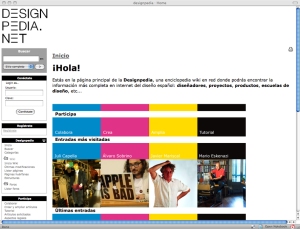
It’s Good Friday and it’s raining in Barcelona. I’ve finished re-reading Zola’s Au Bonheur des Dames, and in a vain attempt to overcome the blues that I always get when I come to the end of a great book, I briefly turned on the TV, only to be bombarded by images of all the Holy Week processions taking place around Spain – which felt as a rather creepy mix of the Spanish Inquisition and Disney World.
So I took refuge in YouTube, and I now offer you a chronological selection of idiosyncratic Barcelona goodies for your entertainment.
These first two are the earliest Barcelona films I’ve been able to find on YT – the first one is truly charming, one gets a wonderful sense of the city as a Mediterranean port, and I love the images of a deserted, brand-new Park Guell patrolled by sabre-wielding policemen.
Barcelona 1900 – La perla del mediterráneo
Barcelona 1908
The Spanish Civil War in thirteen minutes and a half:
Barcelona 19 July 1936 partA
Guerra Civil Española -Bombardeos sobre Barcelona
Entrada de los fascistas en Barcelona 1/2
The Seat 600 was the poster boy of the Spanish economic miracle of the 1960s. It was launched in 1957, manufactured in Barcelona, and easy enough for a woman to drive!
BARCELONA 1950
Lanzamiento del Seat 600
Seat 600
The 60s were the decade of massive migration into Barcelona from the South of Spain, and with the influx of immigrants came the shantytowns. And the music: la Rumba Catalana was born. Peret sang Catalan rumba in the 60s, and Manu Chao a different kind of fusion rumba many decades later.
Campo de la bota
peret – el mig amic (galas del sábado)
Manu Chao – La rumba de Barcelona
In November 1975, Franco dies. The city -the country- lived on the razor’s edge.
Barcelona. Manifestacions anifranquistes 1976
The newly democratic Barcelona of the early 80’s still carried the dusty weight of almost four decades of dictatorship on its shoulders. Loquillo, one of the best Spanish rockers of the decade, sang of his city with perfect pitch, with just enough rage and anomie to capture the spirit of a youth culture about to explode in an extasy of pre-olympic urban transformation.
Loquillo y los Trogloditas – Barcelona Ciudad
Loquillo y Los Trogloditas – Avenida de la luz
Here’s the transformation itself, in a scary stop-motion video that was produced by HOLSA, the Barcelona Olympic public-private body that coordinated the urban renovation works. And no, the disappearance of the old farmer and his artichoke fields under a sea of cement isn’t meant as an ironic twist.
Barcelona 1992 La Transformación
In 2004, the City Council tried to pull another urban regeneration coup like the one in ’92 and invented the Universal Forum of Cultures, to take over a whole new chunk of city, build it up, prettify it, redesign it and hand it over to people other than those that were there to begin with. This time round, the Barcelonese were not too happy with the process and the Council lost the popularity contest. But got away with it anyway.
FORUM Barcelona 2004
Coop City 1 – Barcelona Post Forum 2004
And then came the tourists, among them Woody, Vicky and Cristina. Watch the movie trailer first, then the Barcelona City Council’s tourism promotion video, and try to spot the differences. (Answer: it’s the dolphins).
Landing at Barcelona’s El Prat
Vicky Cristina Barcelona Trailer
Barcelona Turisme Promo Video
Some tourists actually stay on for a while and compete for jobs with the immigrants from Africa and Eastern Europe
Under the Table in Barcelona – Lonely Planet Travel Video
El Raval de Barcelona: un barrio que ya no es lo que era
And last but not least, Barça.
Barcelona: The Inside Story (Storyville BBC) part 1












